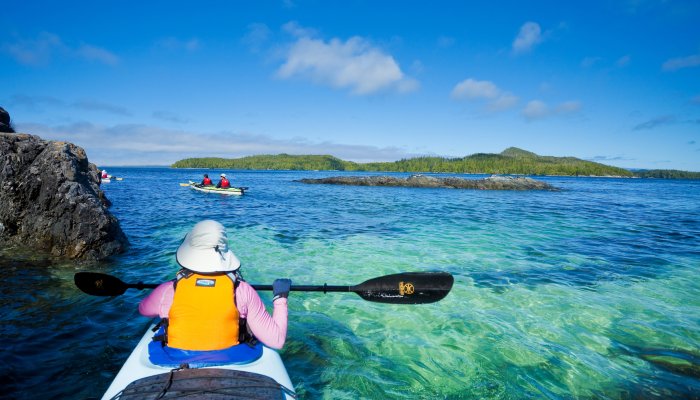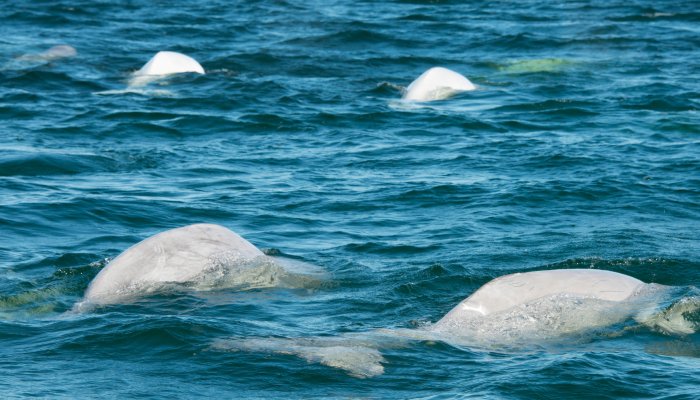11 Essential Peices of Gear for Sea Kayaking
As the warmth of summer sets in, the water is again calling us back to paddle. There are few better ways to immerse yourself in the natural world than by launching a sea kayak to discover what awaits around the next corner. Whether it’s exploring glacial-carved fjords in Quebec, spotting whales off the coast of Baja California Sur, or kayaking down wild rivers in Patagonia, the adventures are endless.
An essential ingredient in any sea kayaking trip is being well prepared and having everything on your gear list ticked off. Not only do you need a durable kayak and paddle but also a good personal floating device (PFD), which could prove to be life-saving.
On organized trips with Sea Kayak Adventures, all of the kayaking gear will be provided for you, together with the enthusiasm and experience of our talented guides. But there are a few things that you may want to bring yourself to ensure the most memorable time on the water.
In this guide, we’ll share with you 11 items to add to your sea kayaking gear list and why they are worth their weight in gold.
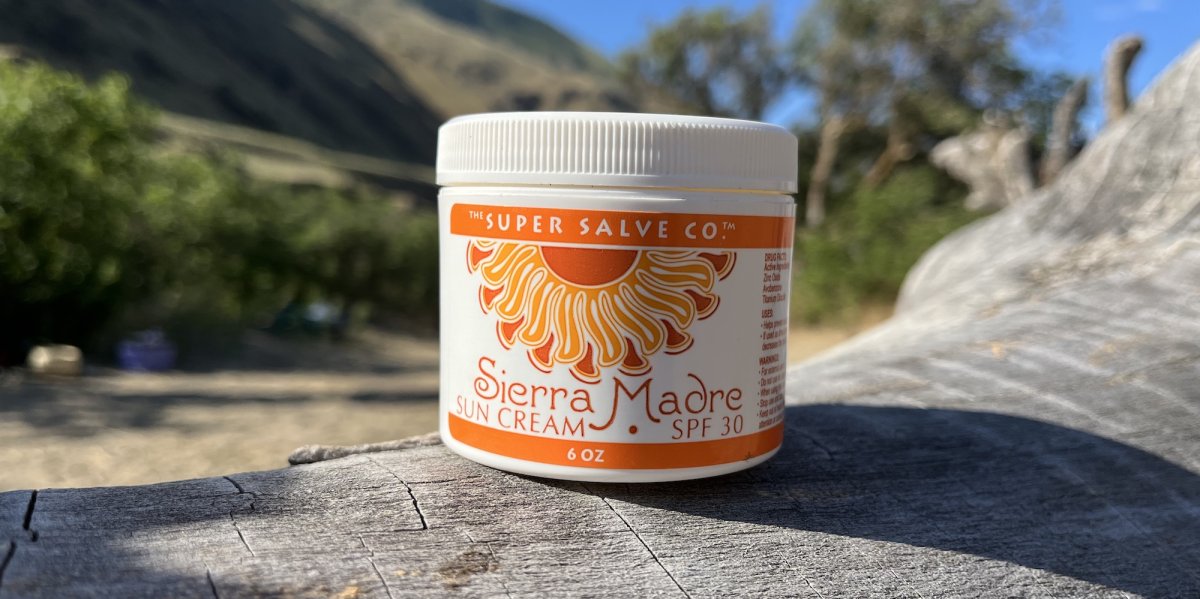
Reef-safe sunscreen
Sun exposure on the water can be deceiving, with the rays not only hitting you from above but also reflecting off the water below. Pack a sunscreen that is “reef safe”, meaning it doesn’t contain chemicals that can be harmful to our marine life. Ingredients like oxybenzone and octinoxate have shown to be particularly detrimental, so steer clear of anything containing those. We’d also recommend packing an SPF lip balm to prevent chapping and sunburns to your lips.
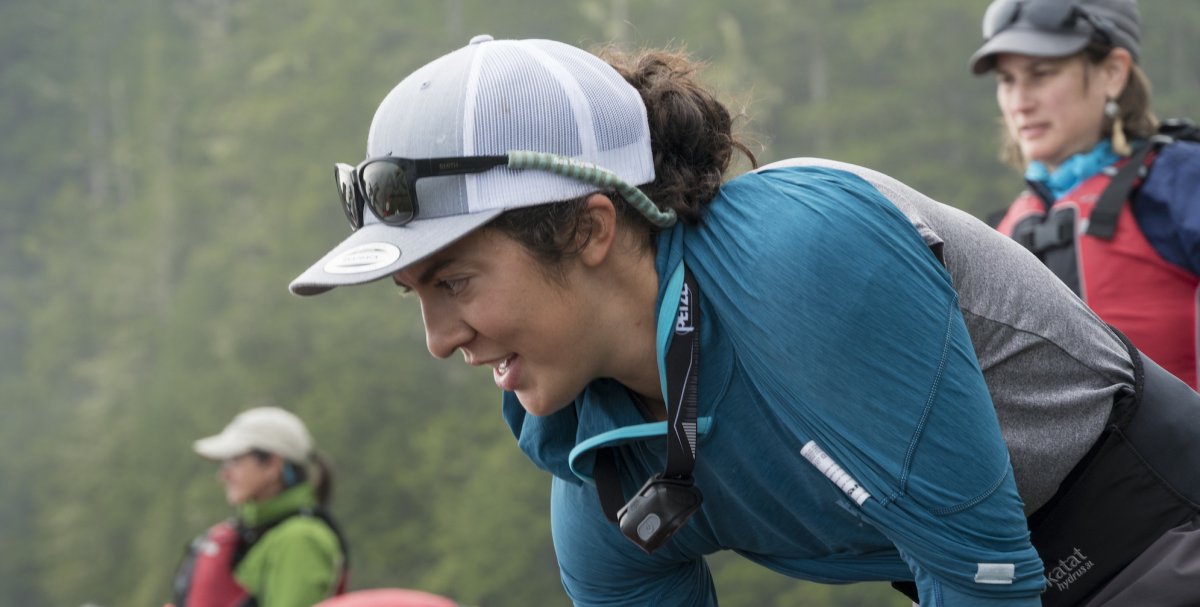
Sunglasses with a retainer
In addition to a reef-safe sunscreen, a pair of high-quality, polaroid sunglasses are a “must”. The polarization will help with glare while the addition of anti-fog coatings will stop you from steaming up. Polarized sunglasses will also make it easier to see and read the water as they block harsh sun glares that refelect on the waters surface. You can also find floating frames that will bob on the water’s surface if they do come off. But to prevent this, we recommend securing your sunglasses with a retainer, meaning they are more likely to end up dangling around your neck. Sunglasses with a retainer strap can easily be worn in combination with a sun hat.
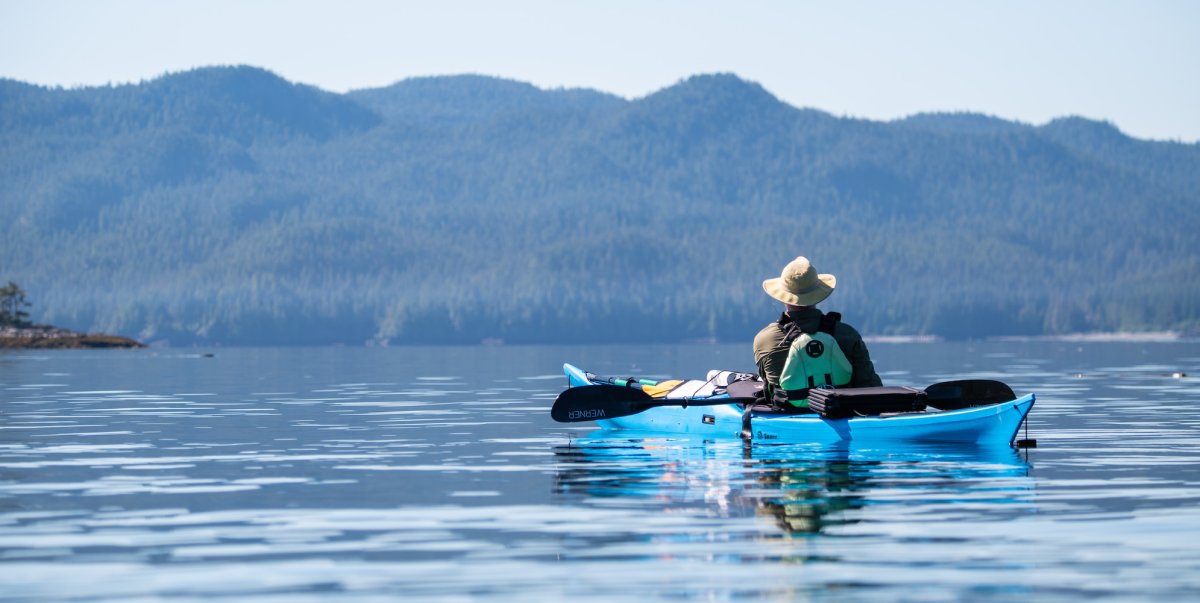
Wide-brimmed sun hat with a strap
You should also consider a strap to secure your sun hat - another essential piece of gear when out on the water. Rather than a basic cap, invest in a wide-brimmed hat that will give you greater coverage around the sides of the face and the neck area. Hats made from quick-drying material are a good choice as they won’t stay soggy for long if they do end up in the water. If you opt not to invest in a wide brim sun hat, we highly recommend you bring along at least a baseball cap to provide some sun protection.
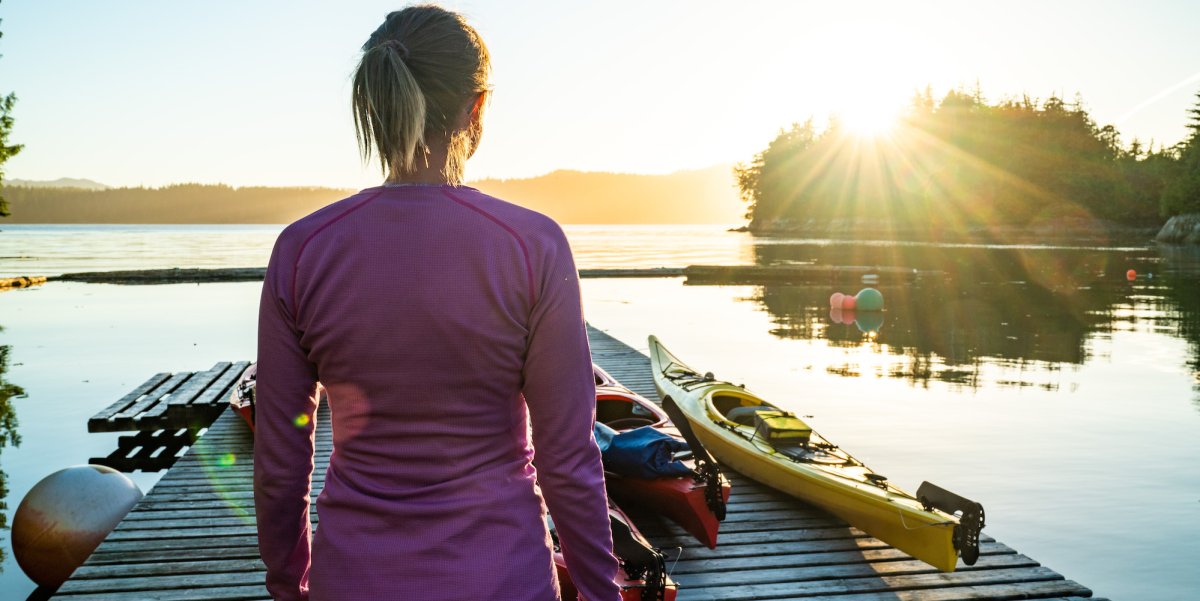
Synthetic sun shirt
Particularly in warm weather, it can be tempting to go paddling in short sleeves and enjoy the sun’s rays on your body. While with reef dafe sunscreen you may chose to go sleeveless, it’s usually better to play it safe by wearing a long-sleeved shirt that will protect your arms from UV rays during the day while adding coverage against mosquito bites in the evening. As with all kayaking expedition gear, quick-drying material is favorable, with several high-tech synthetic materials now available. Synthetic and polyester sun shirts are lightweight, airy, and won't keep you hot in warm weather. They are quick drying and meant to be worn while exercising in the sun. Some shirts, like the silkweight from NRS even provide UPF 50+, helping you stay even more protected from the sun while out on the water.
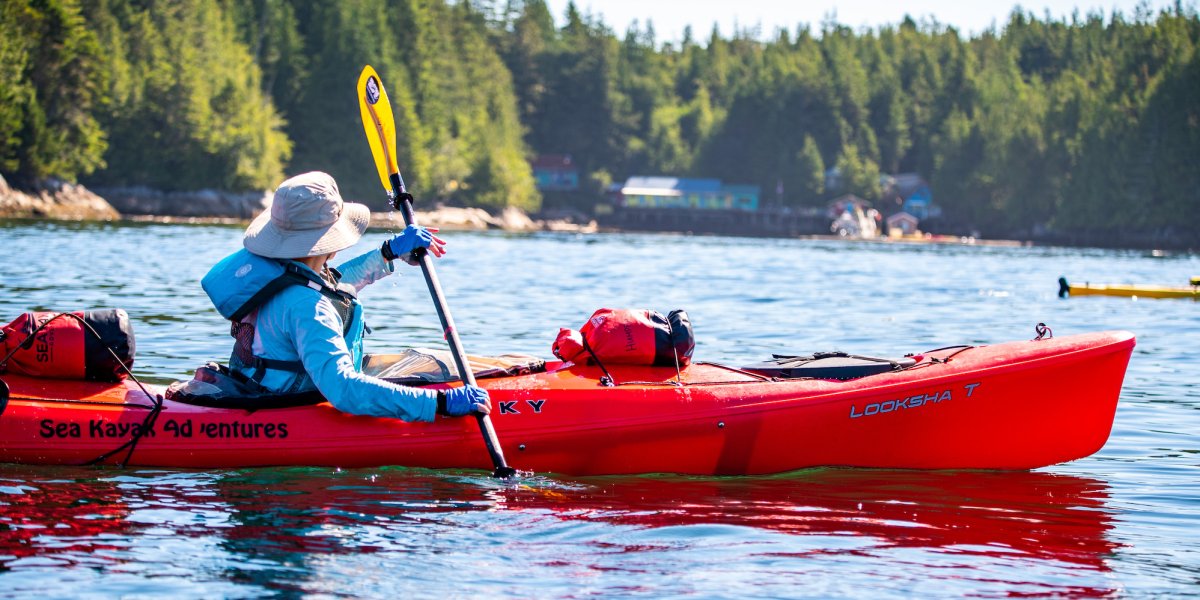
Paddling gloves
Paddling gloves are a great investment. Not only will they protect your hands from chapping and callusing while paddling but they will also stop the top of your hands from getting sunburnt. Add to that, they provide extra grip for holding onto the paddle when it is wet. Look for paddling gloves that are both comfortable and durable, ensuring they will withstand the rigors of kayaking.
Carabiner(s)
Carabiners are a simple and effective way of attaching items to the deck of your kayak, as well as being versatile enough to aid in the hanging of hammocks. One of the great things about a carabiner is that you can easily release the item without requiring any tools or fumbling about with knots. Always bring a few locking carabiners with you, whether you prefer an auto-locking or a twist-locking mechanism.
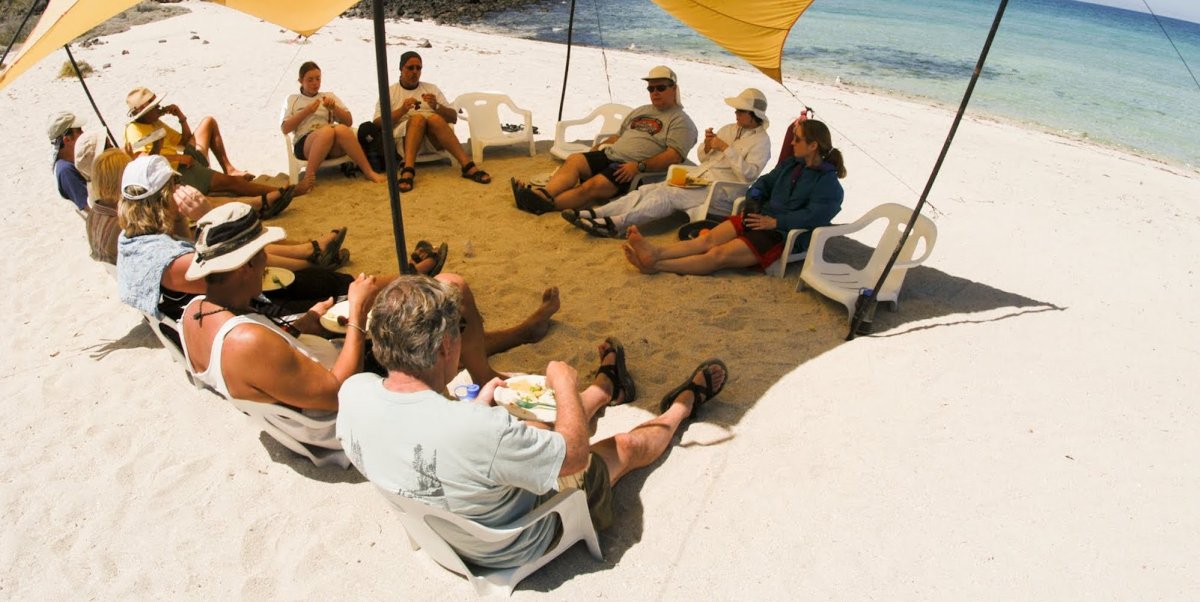
Neoprene footwear or sandals
Before you head off on your kayaking adventure, it’s important to consider what you will wear on your feet while paddling. Neoprene booties are a good option as they are designed for being in the water while providing a certain level of protection for your toes and the base of your feet. They are also relatively lightweight and won’t add a lot of bulk to your luggage. Sandals offer more robust protection for the bottoms of the feet, although they can collect gravel and sand during put-ins and take-outs.
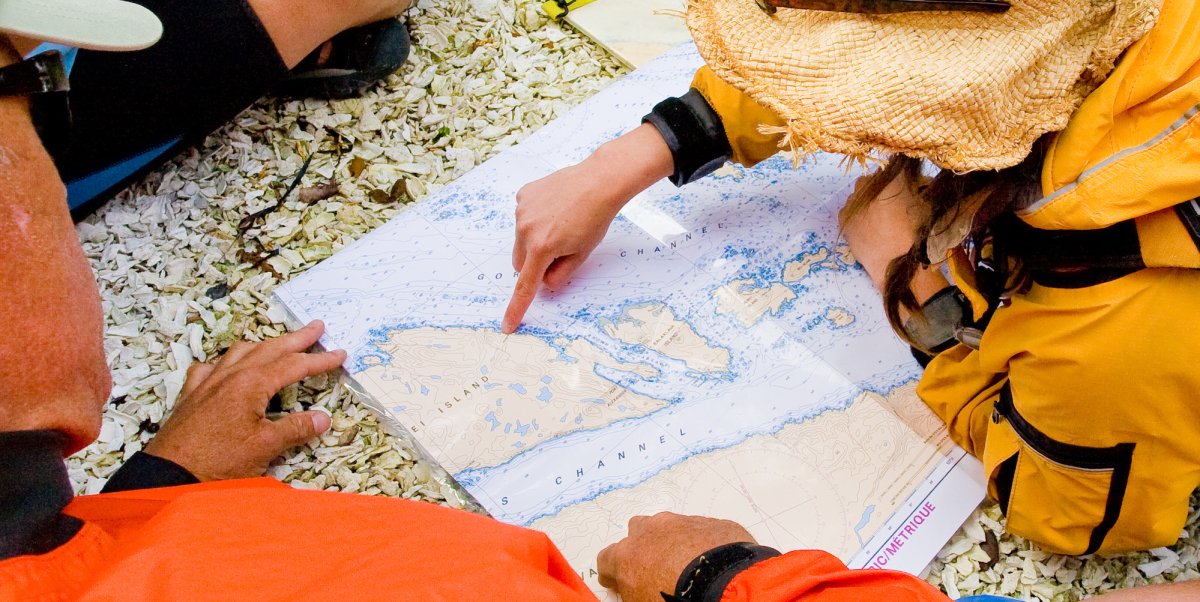
Guidebook or Map
Even if you’re heading off on a guided kayaking tour, it’s worth bringing your own guidebook for reference. It means you can read up each night on what to expect the following day, without solely relying on your guide. It’s also worth bringing along sea charts and a compass so you can develop your circumnavigating skills in a safe environment, particularly if you’re planning on venturing off on your own in the future.
Insulated water bottle
A water bottle (at least a liter in size) is essential for any kayaking trip and we’d highly recommend bringing an insulated one. It will help to retain the temperature of the liquid inside, meaning you get to enjoy a refreshing drink of chilled water (rather than a lukewarm beverage) at rest stops. Look for a stainless steel bottle that is BPA-free and durably designed so it will withstand the rough and tumble of river life. Stainless steel water bottles also don’t retain flavors, so you can put hot coffee in one day, without worrying about having to taste it in your water the next.
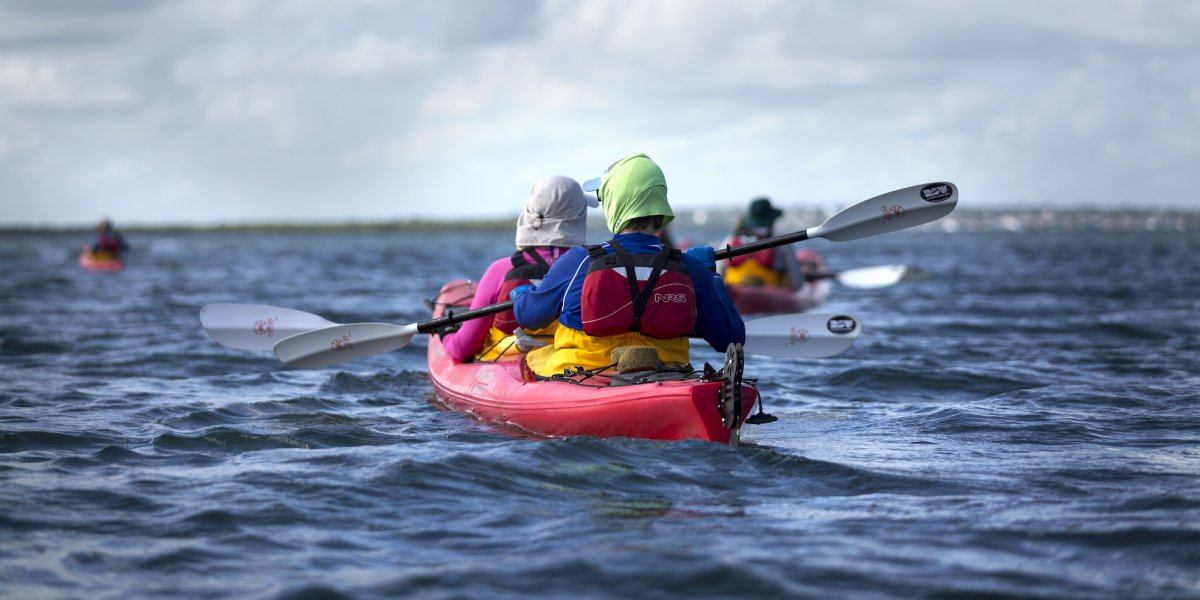
Buff or bandana
A bandana or buff (a tube of stretchy fabric) serves so many purposes - it’s no wonder it’s a staple of any river guide’s wardrobe! Not only can you wrap it around your nose and lower face to protect yourself from sunburn (look for a buff with UV protection) but it will add a layer of warmth in chilly or windy conditions. On hot, summer days, it can be dipped into the river to help cool yourself down and will dry relatively fast when hung up at camp.
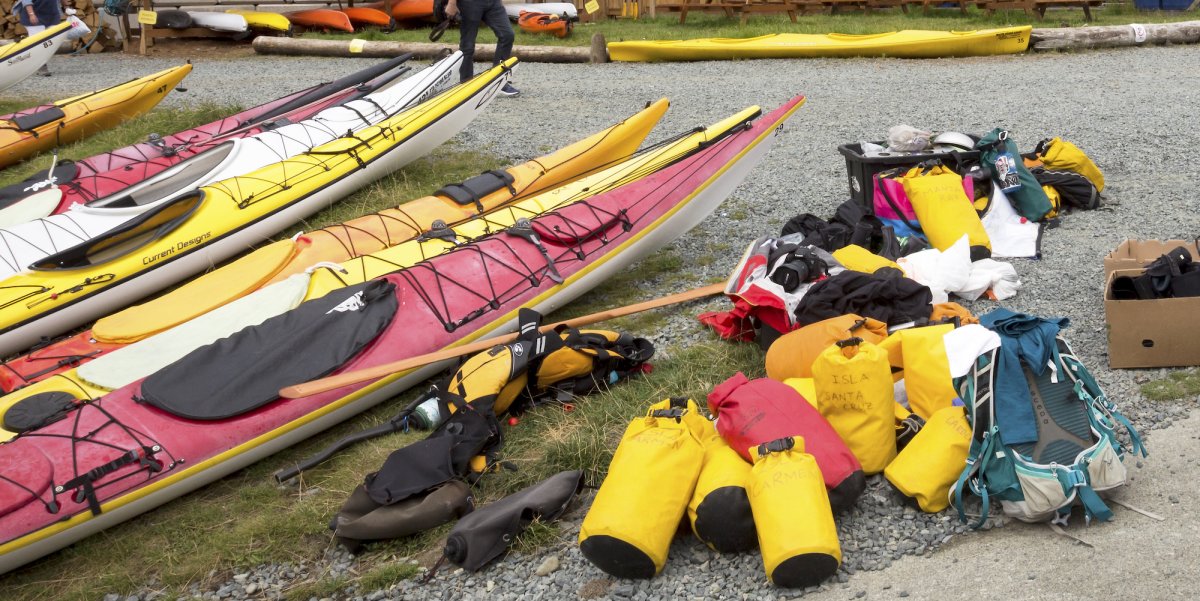
Small dry bag
A dry bag is essential for many water-based activities and sea kayaking is no exception. It allows you to bring a phone or camera along for the ride, without worrying about it getting sprayed or splashed with water. That being said, most dry bags are designed to be folded and clipped shut, so there is no watertight seal and they can leak if completely immersed in water. When using a dry bag, ensure that there are no sharp objects exposed within that could easily puncture the bag.

